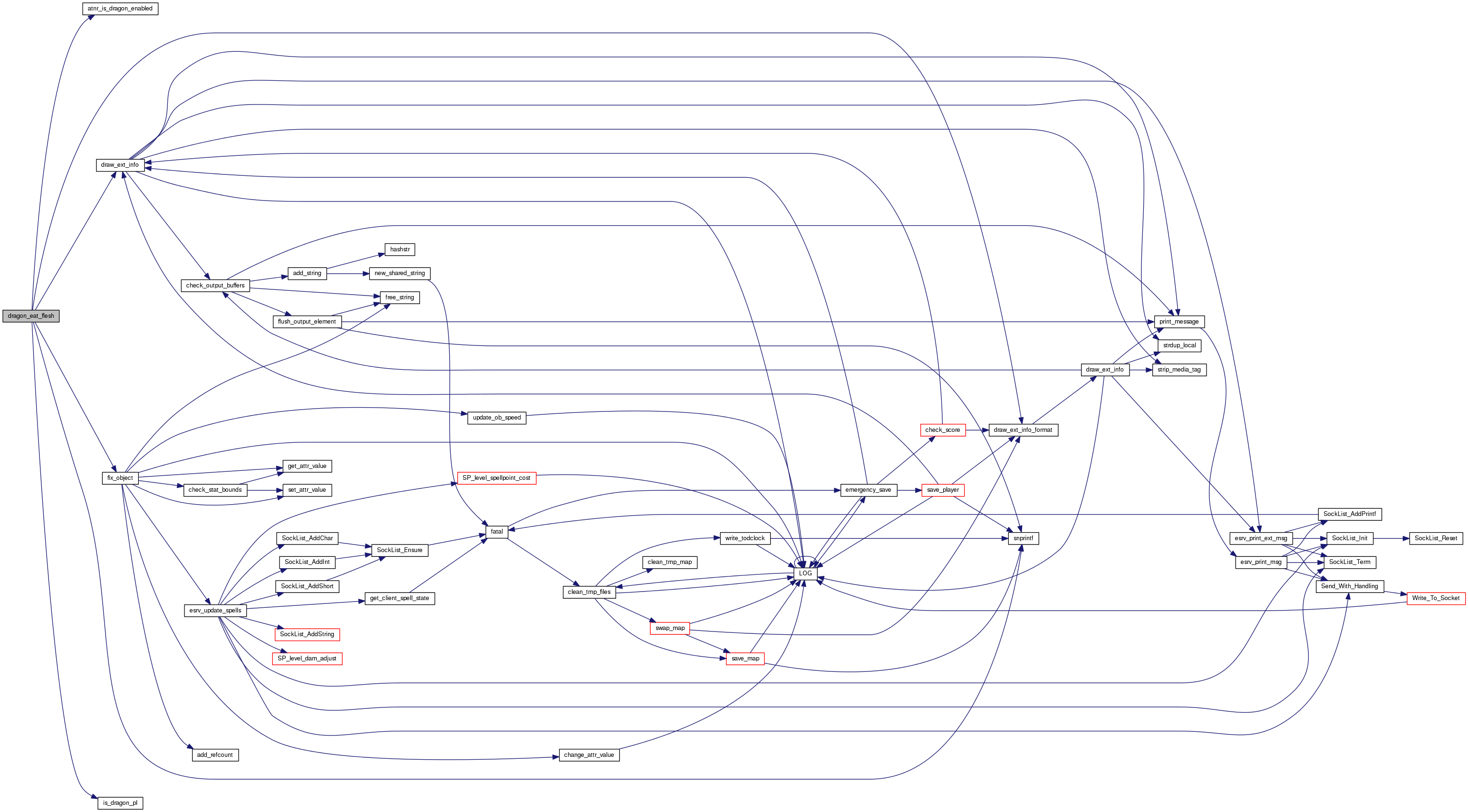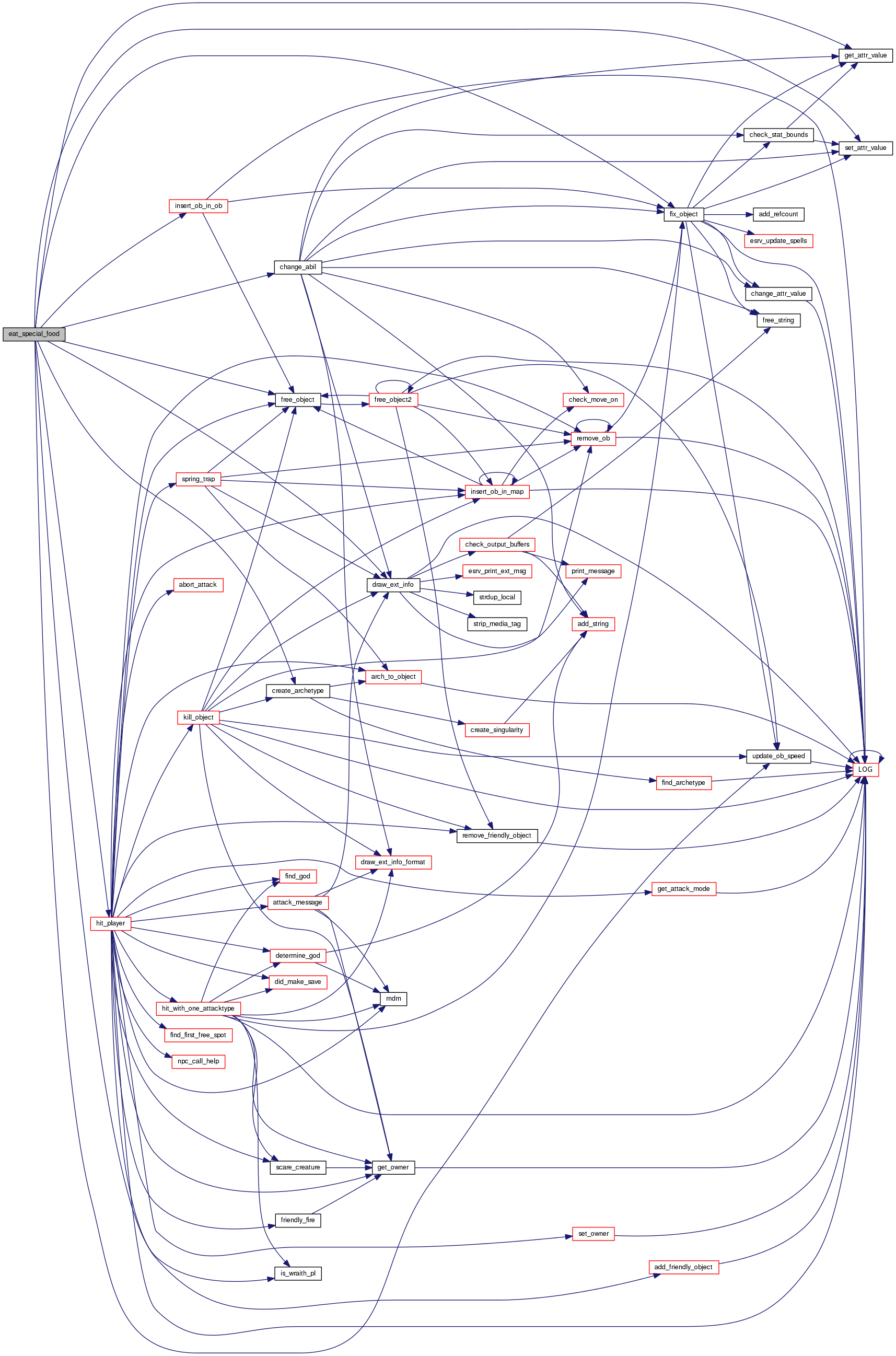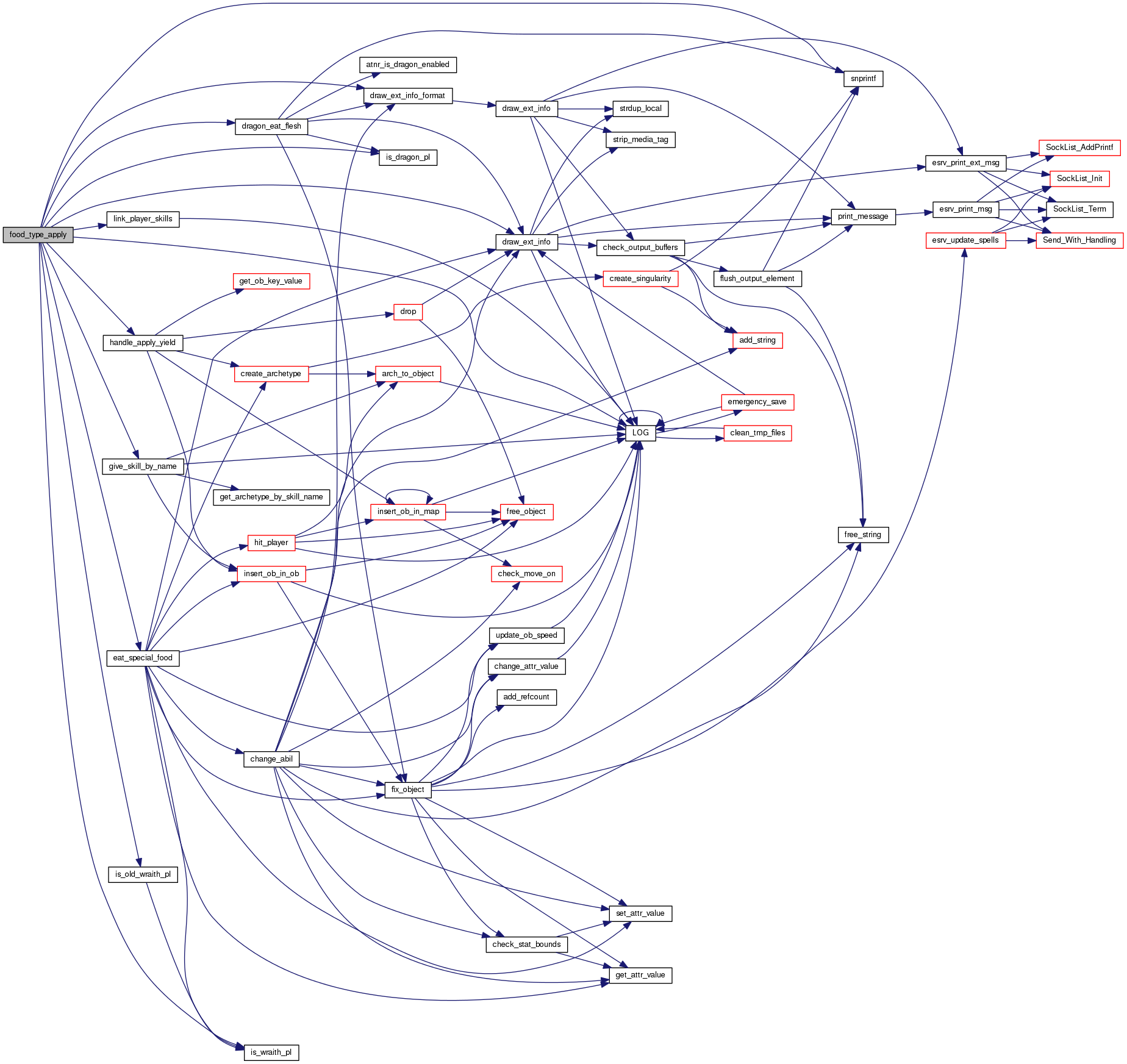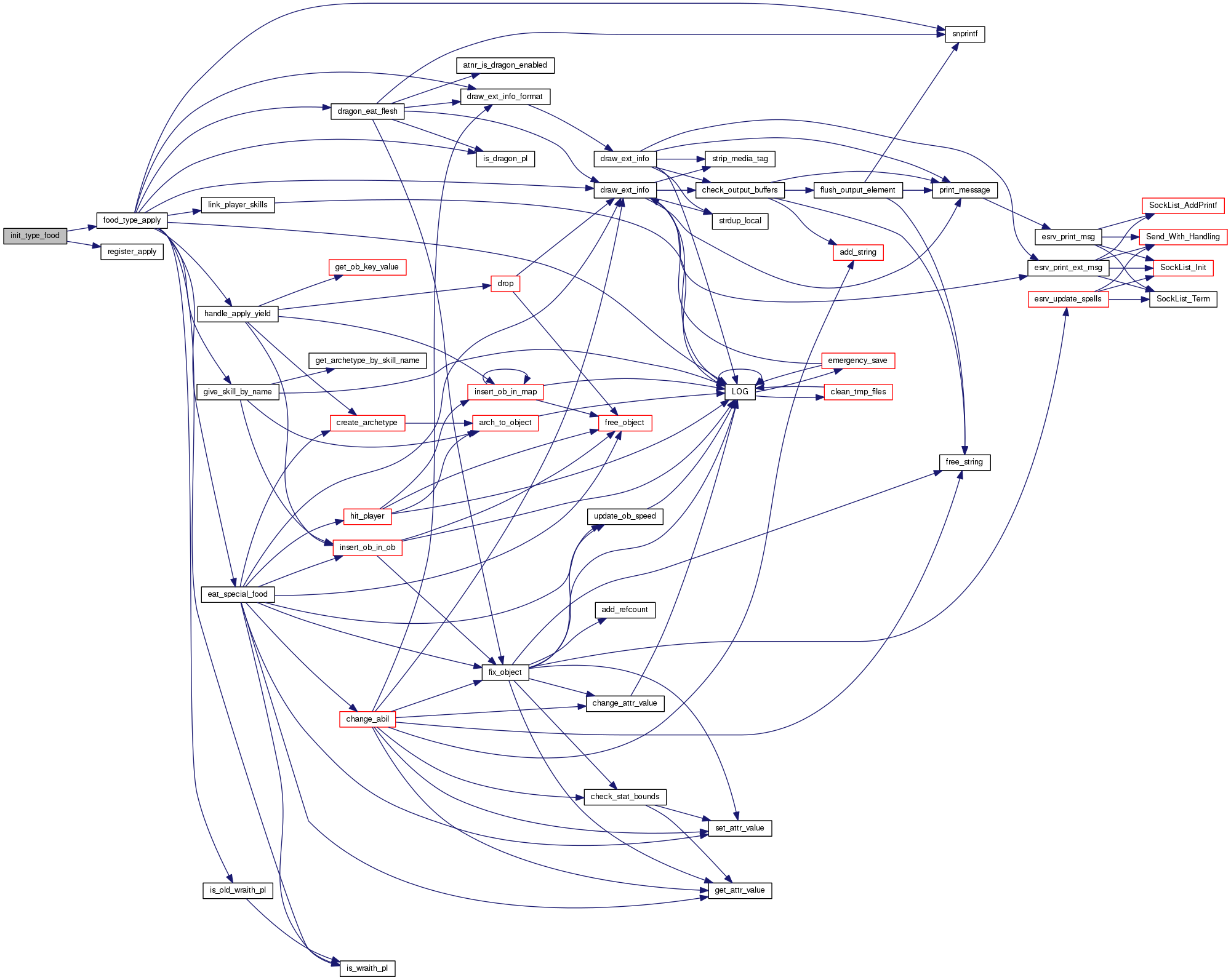#include <global.h>#include <ob_methods.h>#include <ob_types.h>#include <sounds.h>#include <sproto.h>#include <math.h> Include dependency graph for food.c:
Include dependency graph for food.c:Go to the source code of this file.
Functions | |
| static int | dragon_eat_flesh (object *op, object *meal) |
| static void | eat_special_food (object *who, object *food) |
| static method_ret | food_type_apply (ob_methods *context, object *food, object *applier, int aflags) |
| void | init_type_food (void) |
Detailed Description
The implementation of the Food class of objects.
Definition in file food.c.
Function Documentation
A dragon is eating some flesh. If the flesh contains resistances, there is a chance for the dragon's skin to get improved.
- Parameters
-
op object (dragon player) eating the flesh. meal flesh item, getting chewed in dragon's mouth.
- Returns
- 1 if meal was eaten, 0 else.
- Note
- meal's nrof isn't decreased, caller is responsible for that.
Definition at line 237 of file food.c.
References obj::arch, atnr_is_dragon_enabled(), obj::below, change_resist_msg, draw_ext_info(), draw_ext_info_format(), liv::exp, fix_object(), FLESH, liv::food, FORCE, liv::hp, obj::inv, is_dragon_pl(), obj::last_eat, obj::level, MAX_BUF, Settings::max_level, liv::maxhp, MIN, MSG_TYPE_APPLY, MSG_TYPE_APPLY_SUCCESS, MSG_TYPE_ATTRIBUTE, MSG_TYPE_ATTRIBUTE_PROTECTION_GAIN, MSG_TYPE_ATTRIBUTE_RACE, obj::name, archt::name, NDI_RED, NDI_UNIQUE, NROFATTACKS, obj::resist, settings, snprintf(), obj::stats, and obj::type.
Referenced by food_type_apply().
 Here is the call graph for this function:
Here is the call graph for this function: Here is the caller graph for this function:
Here is the caller graph for this function:Handles player eating food that temporarily changes status (resistances, stats). This used to call cast_change_attr(), but that doesn't work with the new spell code. Since we know what the food changes, just grab a force and use that instead.
- Parameters
-
who living eating food. food eaten food.
Definition at line 155 of file food.c.
References AT_POISON, change_abil(), obj::contr, create_archetype(), draw_ext_info(), fix_object(), FLAG_APPLIED, FLAG_CURSED, FLAG_IS_USED_UP, liv::food, FORCE_NAME, free_object(), get_attr_value(), hit_player(), liv::hp, insert_ob_in_ob(), is_wraith_pl(), pl::killer, MSG_TYPE_APPLY, MSG_TYPE_APPLY_CURSED, MSG_TYPE_APPLY_SUCCESS, obj::name, NDI_UNIQUE, NROFATTACKS, NUM_STATS, QUERY_FLAG, obj::resist, set_attr_value(), SET_FLAG, liv::sp, obj::speed, obj::stats, and update_ob_speed().
Referenced by food_type_apply().
 Here is the call graph for this function:
Here is the call graph for this function: Here is the caller graph for this function:
Here is the caller graph for this function:
|
static |
Handles applying food. If player is applying, takes care of messages and dragon special food.
- Parameters
-
context The method context food The food to apply applier The object attempting to apply the food aflags Special flags (always apply/unapply)
- Returns
- METHOD_OK unless failure for some reason.
Definition at line 55 of file food.c.
References decrease_ob, dragon_eat_flesh(), draw_ext_info(), draw_ext_info_format(), DRINK, eat_special_food(), FLAG_CAN_USE_SKILL, FLAG_CURSED, FLAG_NO_PICK, FLESH, liv::food, FOOD, give_skill_by_name(), handle_apply_yield(), liv::hp, is_dragon_pl(), is_old_wraith_pl(), is_wraith_pl(), link_player_skills(), llevError, LOG(), MAX_BUF, liv::maxhp, METHOD_OK, MSG_TYPE_APPLY, MSG_TYPE_APPLY_FAILURE, MSG_TYPE_APPLY_SUCCESS, obj::name, NDI_UNIQUE, PLAYER, QUERY_FLAG, SET_FLAG, snprintf(), obj::stats, obj::title, and obj::type.
Referenced by init_type_food().
 Here is the call graph for this function:
Here is the call graph for this function: Here is the caller graph for this function:
Here is the caller graph for this function:| void init_type_food | ( | void | ) |
Initializer for the food object type.
Definition at line 40 of file food.c.
References DRINK, FLESH, FOOD, food_type_apply(), and register_apply().
Referenced by register_all_ob_types().
 Here is the call graph for this function:
Here is the call graph for this function: Here is the caller graph for this function:
Here is the caller graph for this function:








